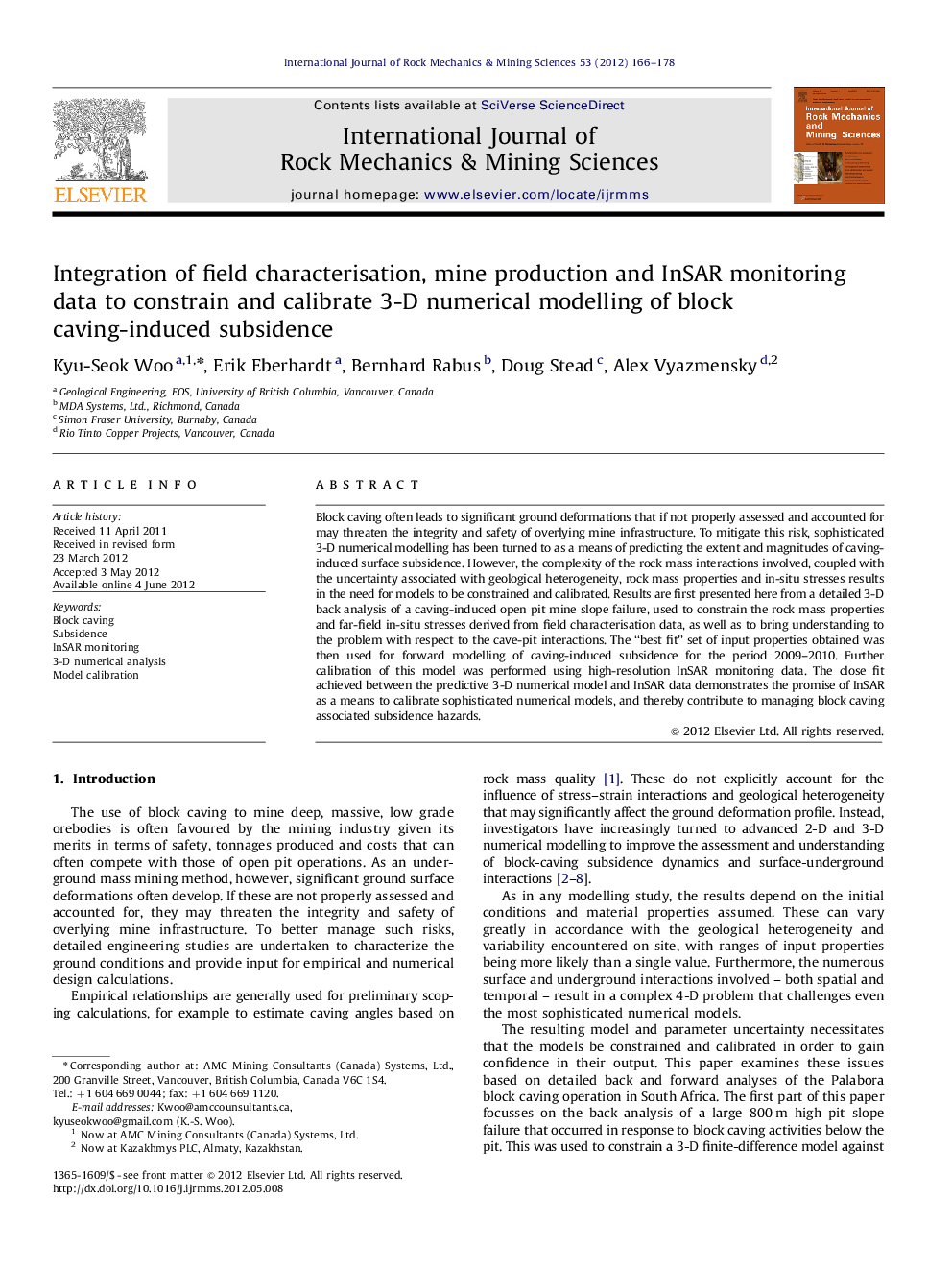| Article ID | Journal | Published Year | Pages | File Type |
|---|---|---|---|---|
| 809504 | International Journal of Rock Mechanics and Mining Sciences | 2012 | 13 Pages |
Block caving often leads to significant ground deformations that if not properly assessed and accounted for may threaten the integrity and safety of overlying mine infrastructure. To mitigate this risk, sophisticated 3-D numerical modelling has been turned to as a means of predicting the extent and magnitudes of caving-induced surface subsidence. However, the complexity of the rock mass interactions involved, coupled with the uncertainty associated with geological heterogeneity, rock mass properties and in-situ stresses results in the need for models to be constrained and calibrated. Results are first presented here from a detailed 3-D back analysis of a caving-induced open pit mine slope failure, used to constrain the rock mass properties and far-field in-situ stresses derived from field characterisation data, as well as to bring understanding to the problem with respect to the cave-pit interactions. The “best fit” set of input properties obtained was then used for forward modelling of caving-induced subsidence for the period 2009–2010. Further calibration of this model was performed using high-resolution InSAR monitoring data. The close fit achieved between the predictive 3-D numerical model and InSAR data demonstrates the promise of InSAR as a means to calibrate sophisticated numerical models, and thereby contribute to managing block caving associated subsidence hazards.
► Results presented from a detailed back and forward 3-D analysis of block cave-open pit interactions and resulting ground deformations for the Palabora block caving operation in South Africa. ► Back analysis of a 2005 pit slope failure used to constrain the 3-D model against the range of rock mass strength values and in-situ stress ratios derived from field investigation data. ► Use of the best-fit properties to forward model the caving-induced subsidence at Palabora for the period 2009–2010. ► Calibration of the 3-D model using high resolution satellite-based Interferometric Synthetic Aperture Radar (InSAR) data. ► Delivery of an advanced information product integrating geology, geotechnical data sets, and 3-D numerical modelling with InSAR imagery to assist mining decision makers in their development of safe and efficient block caving and open pit mining operations.
